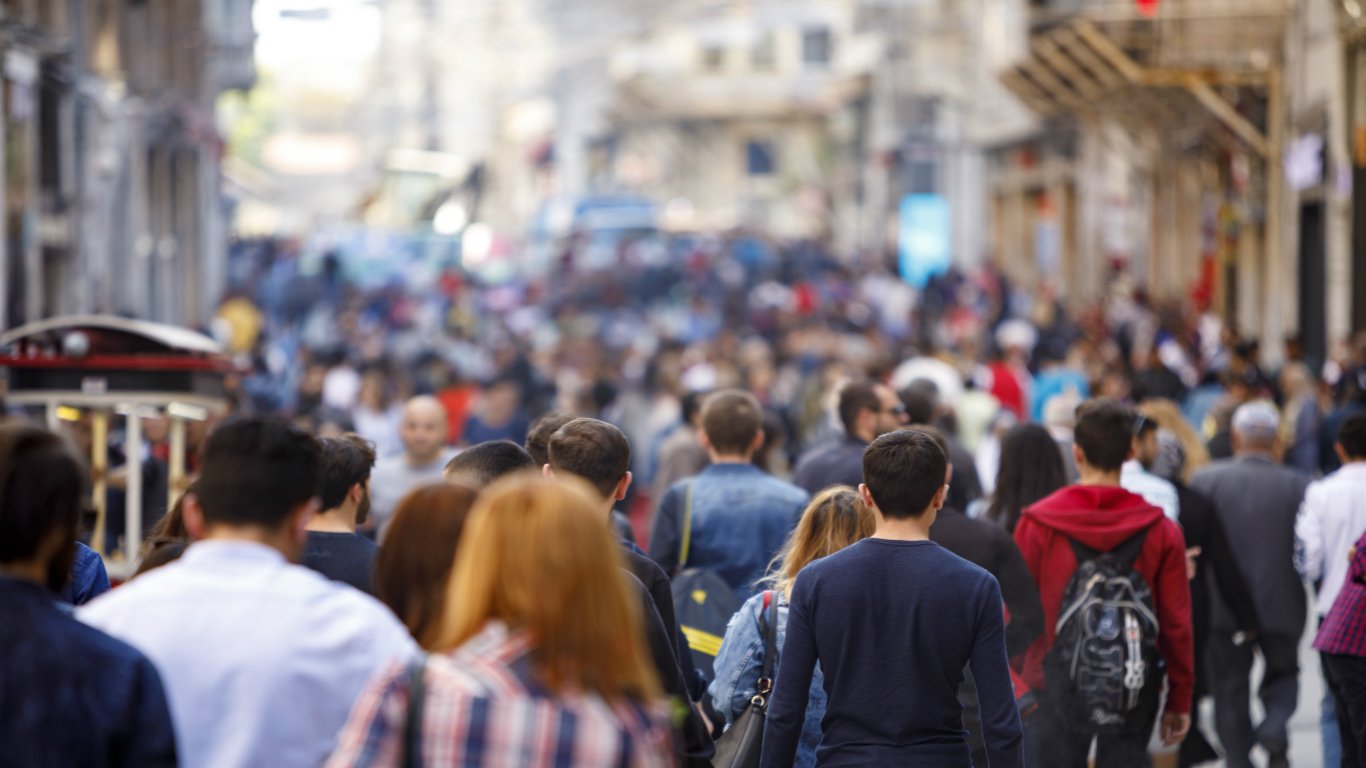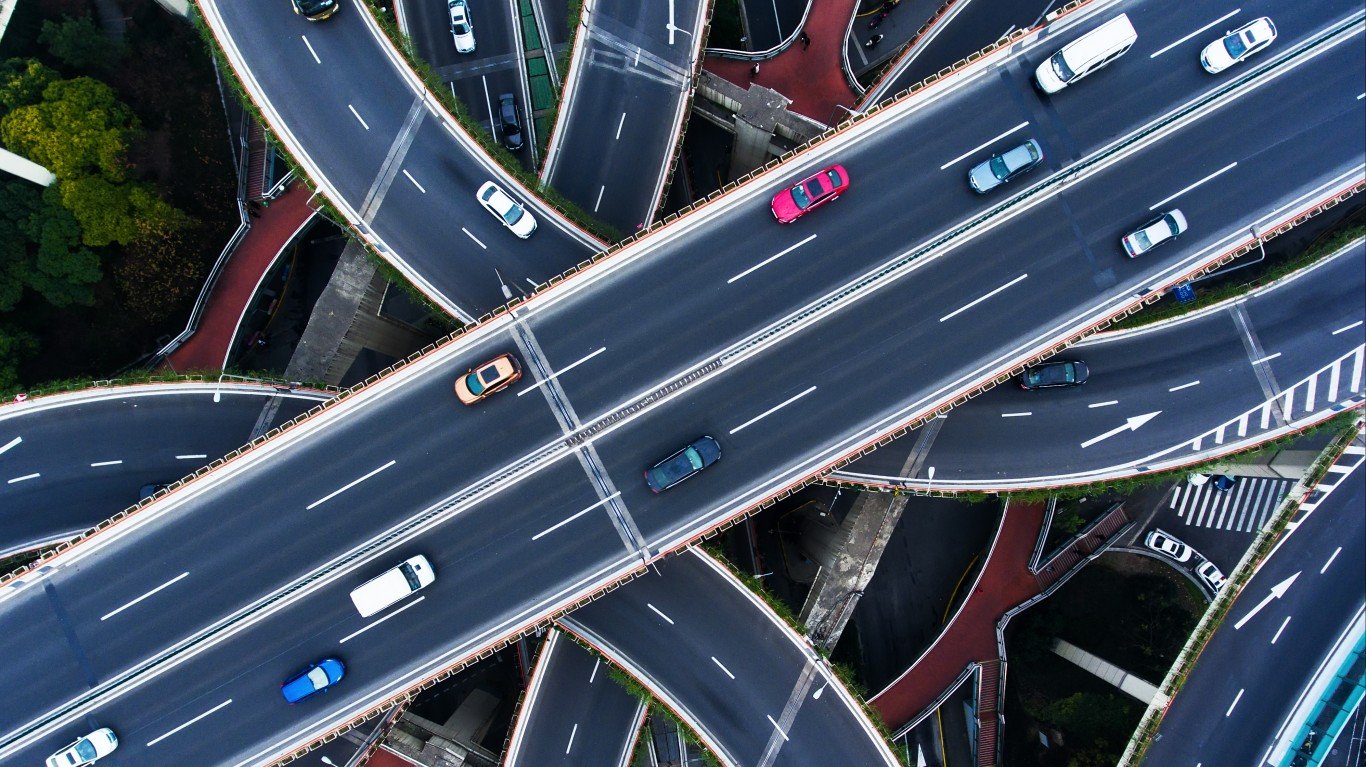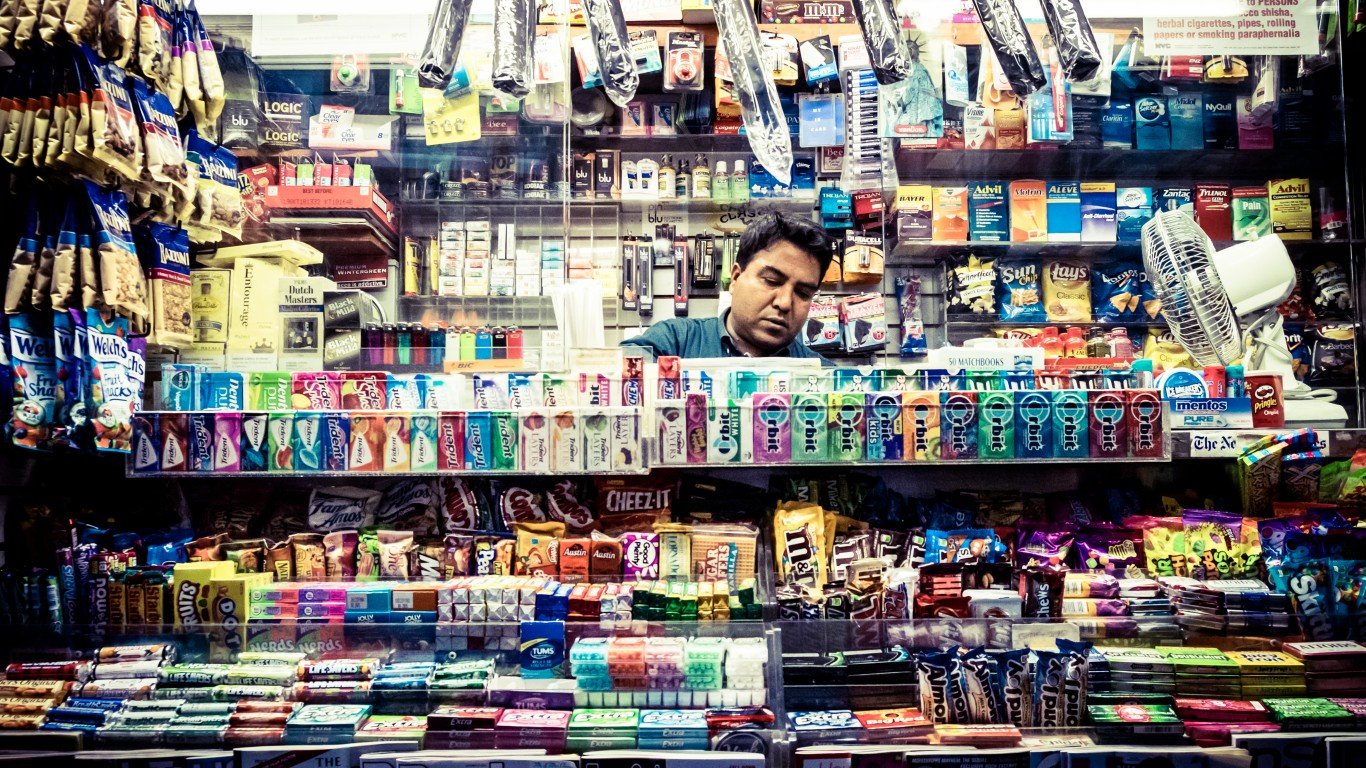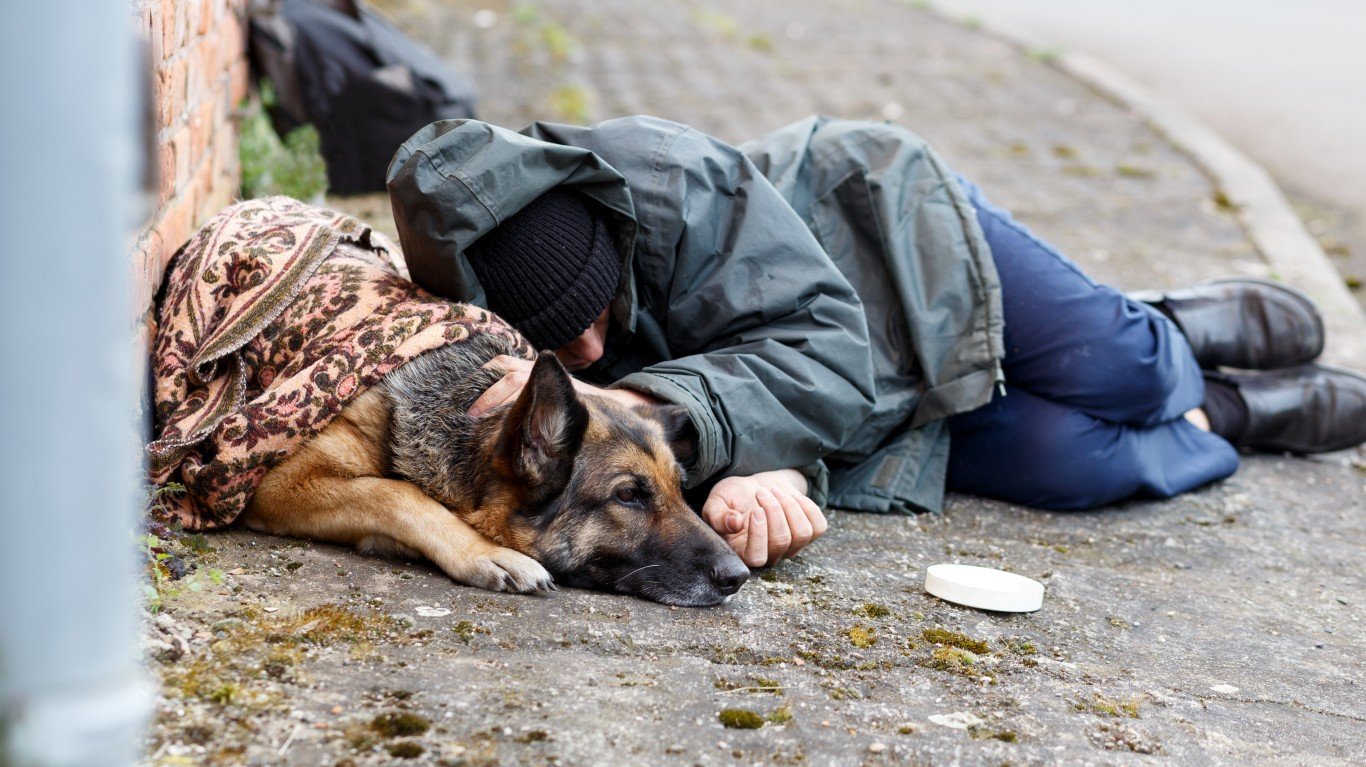

People of all backgrounds dream of moving to the big city seeking fortune. Life in a vibrant metropolis certainly can be a romantic and exciting experience. One thing is for sure: urban life is not the same as rural living, and not all changes are desirable to city-bound individuals and families.
The unprecedented population loss in small rural areas and the “back to the city” movement of the early 2010s has tapered off and has even started to reverse, but urban areas continue to grow much faster than non-urban areas in the United States.
Compared with migration trends of the mid-20th century, we are moving less. In 1948, the year data collection began, 13.6% of U.S. residents moved within their county, and 6.4% moved to another county or state. In 2016, only 6.9% of Americans moved within their county, and 3.9% moved outside their county.
At the same time, the U.S. population has become more concentrated in urban areas, while the populations of rural areas, with few exceptions, have declined in recent decades.
Though Americans are moving less, those moving from a more rural environment to a major U.S. city should expect significant changes to lifestyle and culture.
24/7 Wall St. compiled a list of changes a typical person might expect moving to a major city.
Click here to read about how life will change when you move to a big city.

1. You will work more
Some of the nation’s large metropolitan areas — San Jose, San Francisco, New York, Northern New Jersey, Washington D.C., and others — tend to offer some of the highest wages in the country. These metro areas are also among the most expensive places to live. If by moving to a big city you expect to be earning a higher wage, you’re not wrong, but keep in mind your job might be more demanding and your salary will purchase less than you expect. Expect to work more to achieve the same lifestyle.
[in-text-ad]

2. Prepare for constant noise
Music playing, people talking, sirens blaring, trains screeching — these and others are daily sounds anyone living in a large city is accustomed to. The cacophony of urban noise that emerged during the industrial revolution has led some to describe contemporary society as the noisiest in the history of the world.

3. Politics are to the left of your rural hometown
It is likely that compared to your small rural hometown, moving to a big city means coming into more frequent contact with different worldviews and political perspectives. Notably, cities in general tend to fall further to the left on the political spectrum.
According to a recent Pew Research Center report, 62% of adults living in urban areas lean Democrat and 31% lean Republican. By contrast, 38% of adults living in rural areas lean Democrat and 54% lean Republican.

4. You may become more fashionable
The latest fashions are introduced first to the nation’s urban centers. Bombarded by shopping opportunities, advertisements, and seasoned city-dwellers flaunting carefully chosen clothing and accessories, the newly initiated big city resident is at considerable risk of developing a fashion sense.
[in-text-ad-2]

5. You will be watched all the time
Large cities with millions of people invest in wide-reaching public safety measures. For better or worse, major cities across the U.S. have dialed up their surveillance systems and police departments in recent decades. After the Sept. 11 attacks, New York City added thousands of surveillance cameras, which today number approximately 20,000. The NYPD, the largest police department in the nation’s largest city, employs close to 40,000 police officers. In 2005, Houston, Texas, didn’t have a single surveillance camera. Today, the city has close to 1,000 cameras.
How this aspect of city life changes your life — for example, whether it supports a sense of security, raises personal privacy concerns, or causes the discomfort of feeling watched all the time — depends on your circumstances.

6. You will walk more
The walkability of cities compared to non-urban areas across the United States often leads to one of the greatest life changes for new city residents. More than 75% of Americans drive every day, but in many big cities using a vehicle is a choice. Better shoes are a good idea.
[in-text-ad]

7. Everyday life will be more diverse
The high concentration of people in major U.S. cities inevitably means more diversity compared to small towns. This diversity provides for more diverse experiences, from cultural events to new cuisine. In particular, cities are considerably more racially diverse than non-urban areas. While the nation as a whole is predominantly white, the majority of urban dwellers identify as non-white. In suburban areas, just under a third of residents identify as non-white, and in rural area approximately one in five do.

8. Driving will become more complicated
The choice not to own a vehicle is considered quality of life improvement in many large U.S. cities. For those who need or prefer to own a vehicle in a city, dense urban driving brings new challenges compared to rural driving. Between 700,000 and 800,000 vehicles enter New York City every day, a far lower figure than the amount of individuals entering the city, but still an amount that causes congestion and traffic.
City drivers must navigate one-way streets, street cleaning and plowing schedule, the cutthroat environment of finding parking, and other complexities. Further, while purchasing a car costs about the same in both rural and urban areas, the cost of owning a car will go up substantially in a city due to the cost of parking and insurance.

9. Your health will change
Cities are absolutely full of health risks. To give just one example: air pollution from higher vehicle traffic in cities has been associated with higher incidence of lung cancer. Long-term city dwellers are generally at greater risk of lung cancer diagnosis.
This is by no means the full picture, and the effect of cities on residents’ health is likely favorable overall. Research by Stanford economist Raj Chetty has demonstrated a strong relationship between income levels and longevity. That analysis has also revealed that urban environments can raise life expectancy for a population, particularly among an area’s lower-income residents.
[in-text-ad-2]

10. Enjoy amenities around the clock
With enough disposable income, virtually any desire can be met in a big city — and at any time of the day. Though New York City is the one nicknamed The City That Never Sleeps, round-the-clock services is a characteristic of many U.S. metropolitan areas.

11. How you experience nature will change
Most cities dedicate many acres of real estate to green space. But for Americans who in their rural hometown may have enjoyed easier access to hiking, swimming, and other outdoor activities, every day life will likely contain significantly fewer such experiences. Generally, escaping the crowds will require greater planning and travel times for city residents.
[in-text-ad]

12. Learn to use a map
Bus routes, subway maps, and the often nebulous street structures of major U.S. cities mean using a map is a daily requirement for city dwellers — at least for the first month or two after moving. This can be a significant change for someone more accustomed to using familiar landmarks and well-worn routes in far less dense geographical areas.

13. Learn to cope with visible human suffering
For most people, some extent of desensitization is necessary to sustain the relentless level of human contact in urban areas. Poverty rates and income inequality are higher in urban areas than in rural ones. And while cities may present tremendous opportunities for many people, they are at the same time the sites of serious struggle and suffering. An estimated — and grossly under-counted — more than half a million Americans lack permanent shelter, and most of them reside in cities, according to the U.S. Department of Housing and Urban Development.
There are plenty of ways to work towards alleviating these problems. Individuals living in big cities for the first time will be confronted by their own roles in the varied experiences visible in large urban areas.
Take This Retirement Quiz To Get Matched With A Financial Advisor (Sponsored)
Take the quiz below to get matched with a financial advisor today.
Each advisor has been vetted by SmartAsset and is held to a fiduciary standard to act in your best interests.
Here’s how it works:
1. Answer SmartAsset advisor match quiz
2. Review your pre-screened matches at your leisure. Check out the
advisors’ profiles.
3. Speak with advisors at no cost to you. Have an introductory call on the phone or introduction in person and choose whom to work with in the future
Take the retirement quiz right here.
Thank you for reading! Have some feedback for us?
Contact the 24/7 Wall St. editorial team.

